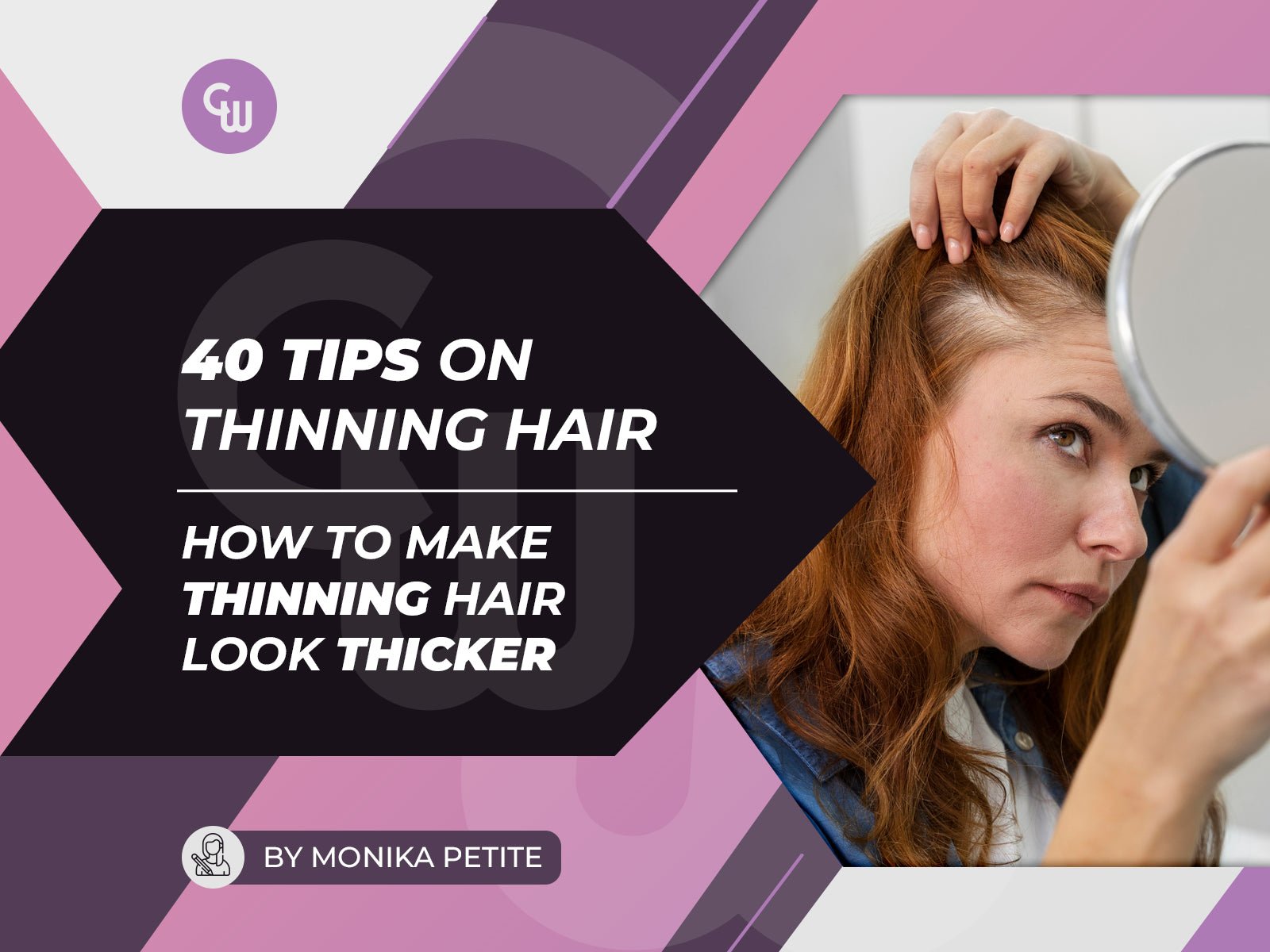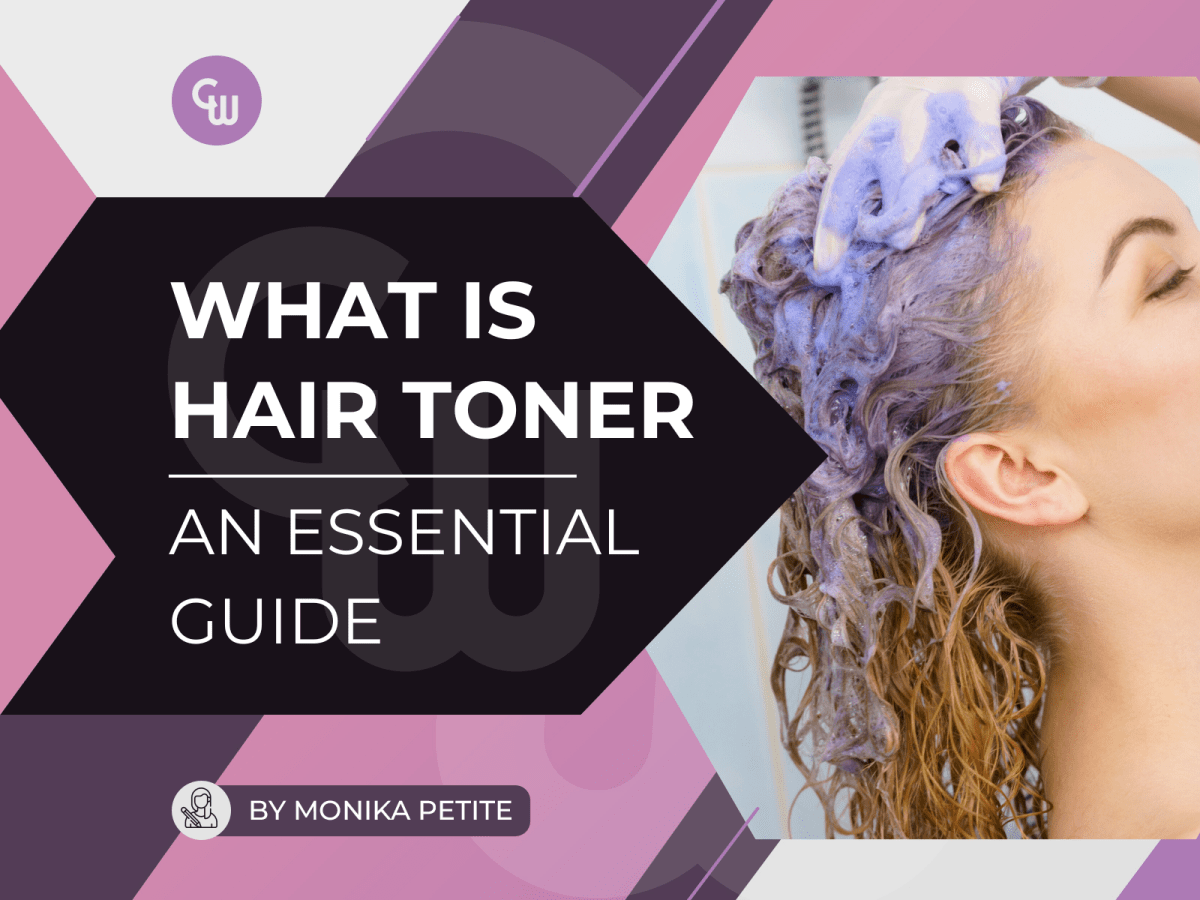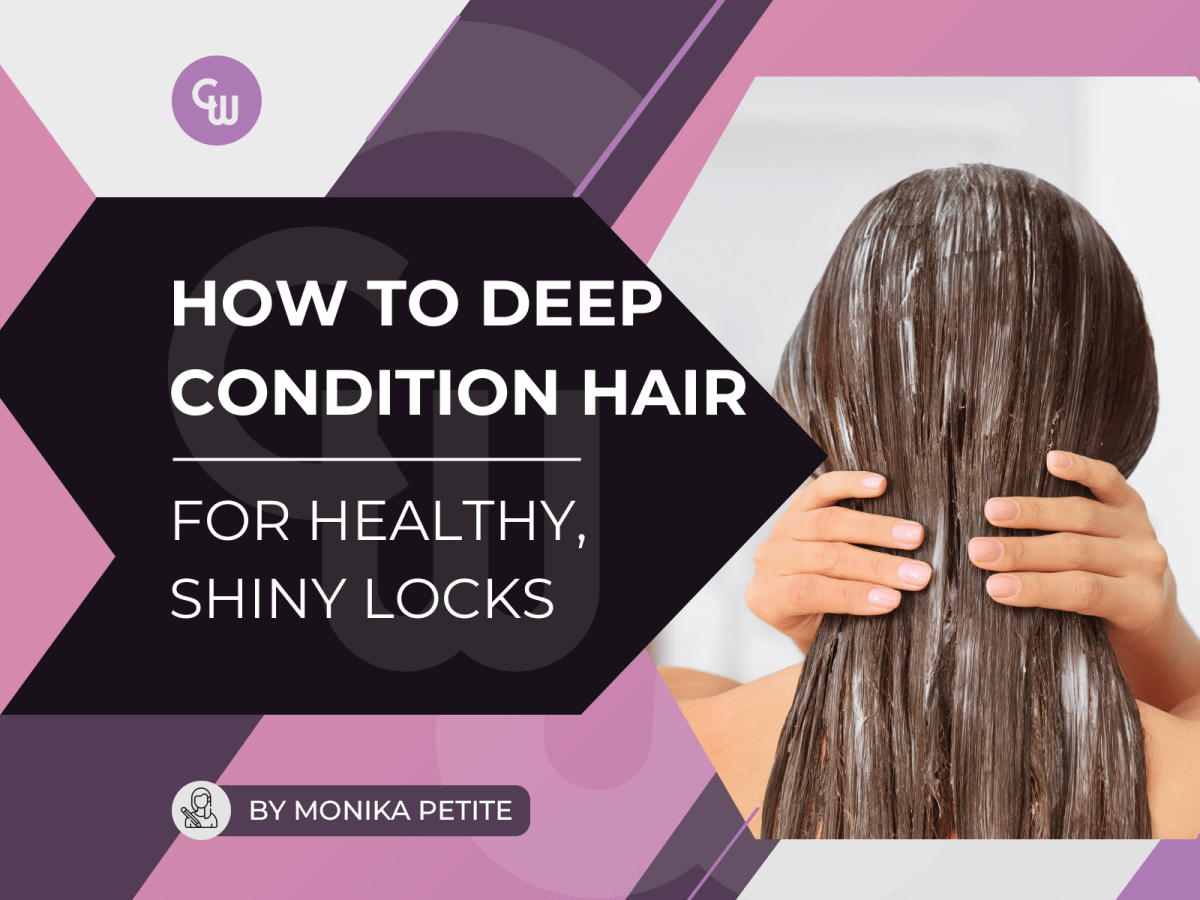Thinning hair? Ugh, thin hair woes, right? 😩 We've all been there or know someone who's been on that tricky hair journey. The truth? Thinning hair is a concern for many, but today, I'm here to bring some sizzling insights on how to make thinning hair look thicker. By the end of my article, you'll be armed with tips, tricks, and treasures that can make even the finest of fine hair strut out with the confidence of thick hair. Oh, the beauty dream!
Table of Contents
- Understanding Thin Hair
-
Preparing Your Hair for Thickness
- The significance of volumizing shampoo and conditioner
- The role of clarifying shampoos
- Hair thickening shampoos: Do they work?
- Vitamins and their impact: B12, and others
- Dietary impacts: Foods that prevent hair loss and promote growth
But beyond the looks, it's essential to touch upon the heart of the matter - our hair's health. Just like we wouldn't skip our skincare routine, our tresses demand love and care, especially when they're thinning. Because if we don't take care of our hair follicles now, we might just regret it later. And honey, Monika Petite does NOT do regrets! 😘
So, ready to amp up that volume and ditch those thin hair woes? Stay with me, darlings! 💕
Understanding Thin Hair
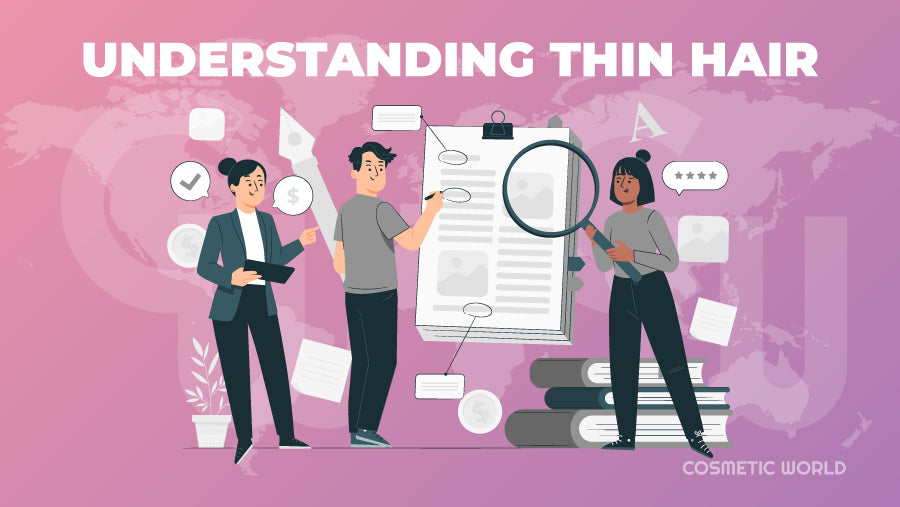
Luscious locks, where art thou? Before we rev up the volume, it's time to dive a little deeper into the 'hairy' situation. 🕵️♀️ Understanding the root cause (pun totally intended) can help us address it better. After all, knowledge is power and, in this case, volume!
What Causes Thin Hair?
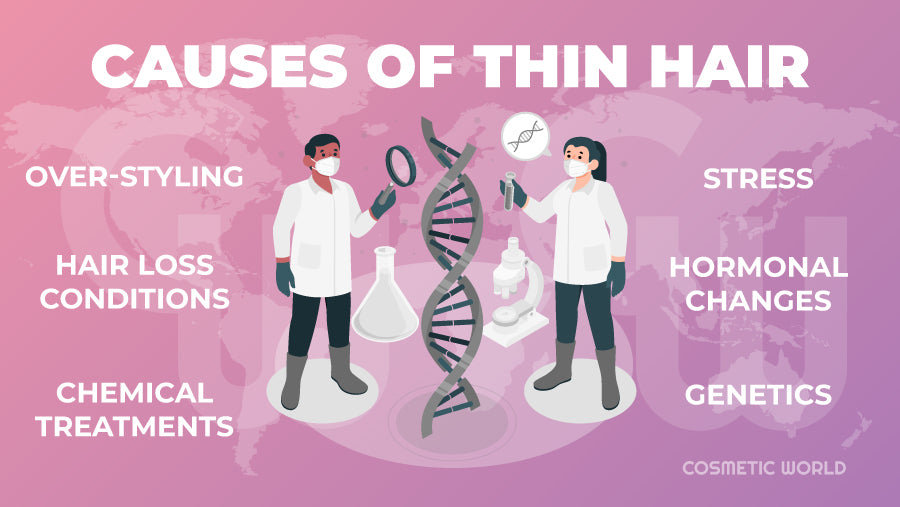
-
Genetics: Ah, the good old family tree! Sometimes, our genes dictate the thickness of our mane. If mom or grandma had thin hair, chances are, you might inherit that trait.
-
Hormonal Changes: Hello, hormones! Pregnancy, menopause, and even certain medical conditions can lead to thinner hair.
-
Dietary Deficiencies: Starve your body, and you might just starve your hair follicles. Essential nutrients are key for hair growth.
-
Over-styling: That daily curling iron rendezvous? Might just be frying your tresses and causing hair damage.
-
Hair loss conditions: Conditions like alopecia can result in hair thinning or even patches of hair loss.
-
Stress: High stress can lead to hair fall. Remember to breathe, darlings!
-
Chemical Treatments: Too many chemical hair treatments can be harsh, leading to breakage and thinning.
Now, here's the tea ☕. There are some wild misconceptions floating around like that butterfly clip from the 90s. Let's bust 'em!
-
Misconception: "Cutting your hair often makes it grow faster."
Truth Bomb: While a trim can prevent split ends and breakage, it doesn't directly promote hair growth from the roots. -
Misconception: "Wearing hats cause hair loss."
Truth Bomb: Unless that hat is so tight it's pulling out your hair, hats are not the culprit behind hair loss. It's more of a hair myth than a fashion statement!
The Difference Between Thin Hair and Fine Hair
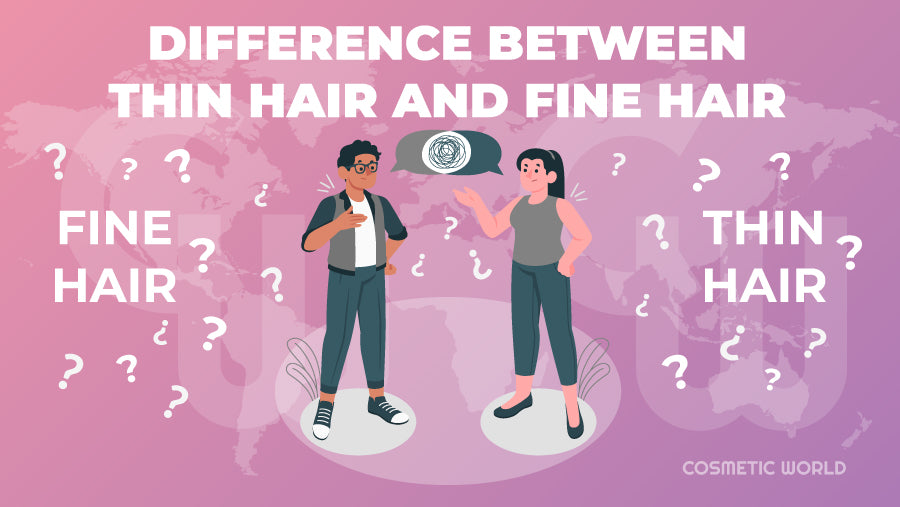
Dearest readers, let's get something straight, or wavy, or curly, depending on your hair's natural texture! 😂 The terms 'thin' and 'fine' are often used interchangeably, but they are not identical twins.
Thin hair refers to the density or the number of hair strands on your scalp. Imagine a lush forest versus a sparser woodland. It's all about how many trees (or strands) are in the plot.
On the other hand, fine hair is all about the thickness (or rather, thinness) of individual hair strands. Each strand can be as fine as silk or as thick as a woolen thread.
Let's break it down in a table, shall we?
Criteria |
Thin Hair |
Fine Hair |
| Definition | Refers to fewer hair strands on the scalp | Refers to the diameter of individual hair strands |
| Texture | Can be coarse, medium, or fine | Feels very soft, almost silky |
| Volume | Might lay flat due to less density | Lacks volume because individual strands are so lightweight |
| Styling | Can hold styles but may look less voluminous | Styles might not hold as long due to the delicate nature of strands |
Preparing Your Hair for Thickness
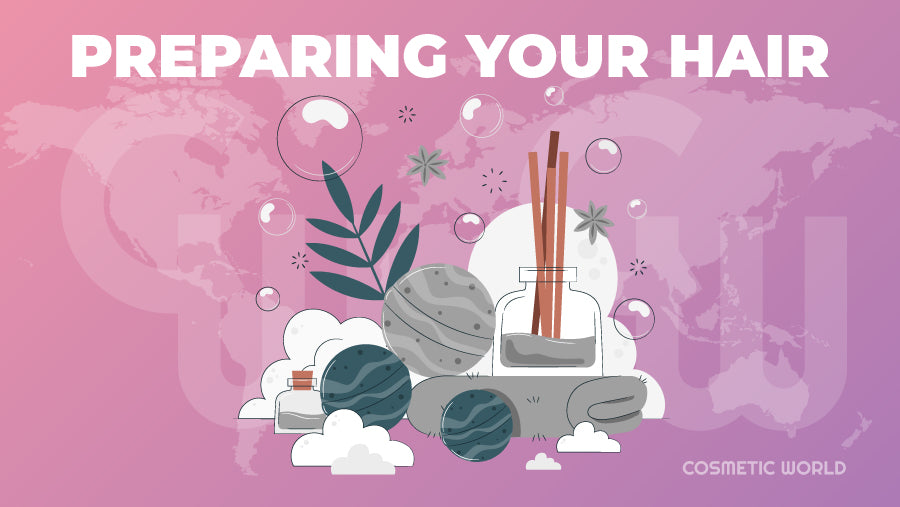
Before we venture into creating illusions of bouncier tresses, it’s like prepping for a fancy soirée; the magic is all in the prep work, honey! 🥂 Let’s delve into the best backstage beauty secrets for that enviable, full head of hair. Ready, set, volume!
Choosing the Right Hair Products
The significance of volumizing shampoo and conditioner
Dolling up begins in the shower! 🚿 Volumizing shampoo and conditioner are the dynamic duo your thin hair needs. These products are specifically formulated to give your hair a lift right from the roots, creating an illusion of fuller, thicker hair. The lightweight formula ensures that your tresses aren’t weighed down, letting them swing and sway with extra volume. Is a voluminous look from the right shampoo too good to be true? It's not, darlings!
The role of clarifying shampoos
Buildup? Not on Monika's watch! Clarifying shampoos are the detox juice cleanses of the hair world. They deep cleanse, removing product residue, oils, and impurities that can weigh hair down. When your hair is free of all that gunk, it stands taller and prouder, making thinning hair look thicker, think of it as your monthly detox treatment for your hair!
Hair thickening shampoos: Do they work?
Ladies and gents, enter the mysterious world of hair thickening shampoos. These potions promise to thicken each hair strand, giving the appearance of thicker roots and overall fuller hair. The secret? They coat your strands, adding some extra oomph to each fiber. While they may not change the genetic makeup of your hair, they can certainly offer a boost in appearance. Remember, shampoo big hair starts with the right products, and these can be a step in the right direction!
Natural Methods to Boost Hair Growth

Vitamins and their impact: B12, and others
Pop quiz! 🍇 What's essential, often overlooked, and a best friend to your hair follicles? Vitamins! Here are some of the stars in the vitamin galaxy:
-
Vitamin B12: Boosts oxygen availability to follicles, promoting healthy hair growth.
-
Biotin: Often dubbed the 'hair growth vitamin', it's essential for keratin production.
-
Vitamin E: It improves blood circulation to the scalp, rejuvenating those follicles.
-
Vitamin A: Every cell's growth booster, it also aids the production of sebum, keeping hair moisturized.
-
Iron: Vital for hair growth. Iron deficiency? You might see an increase in hair fall.
-
Vitamin D: It stimulates hair follicles, so catch those sun rays (with sunscreen, of course)!
Dietary impacts: Foods that prevent hair loss and promote growth
You are what you eat, especially when it comes to hair! Here are some yummy delights to add to your grocery list:
-
Spinach: Packed with iron, folate, and Vitamin A. Popeye knew the secret all along!
-
Berries: High in Vitamin C, they boost collagen production.
-
Sweet Potatoes: A fantastic source of Vitamin A. Tasty and beneficial for your locks.
-
Eggs: Rich in biotin and protein. No wonder they're breakfast champions!
-
Avocado: With Vitamin E in abundance, they're not just for toast!
-
Nuts: Like almonds, provide Vitamin E, and can help in reducing hair loss.
-
Fatty Fish: Omega-3 fatty acids? Yes, please!
Remember, with the right prep and a little knowledge, thin hair woes can be a thing of the past. Onward to volume and glory! 🌟🦁
Haircut and Styling Hacks
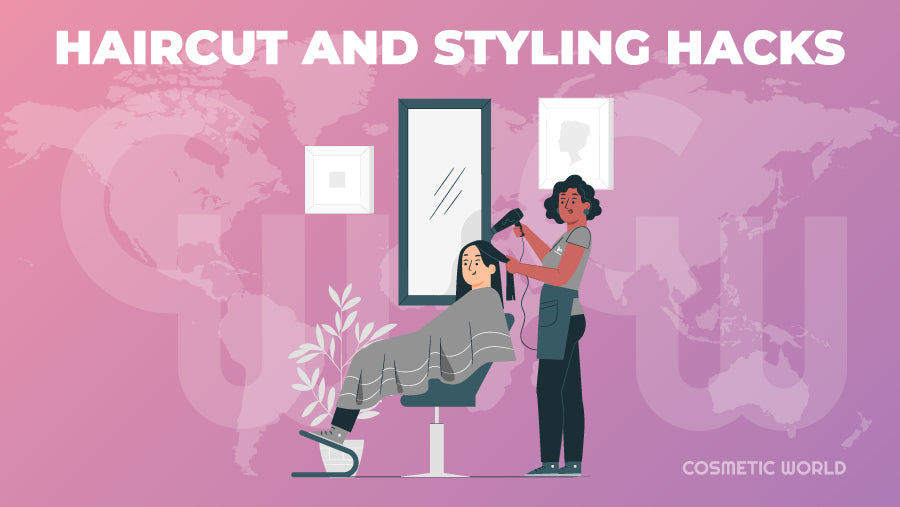
Ladies, gents, and everyone fabulous in between: what if I told you your "hair dreams" are just a snip away? 😲✂️ Yep! There's magic in getting it just right, and here are the spells to transform thin hair.
Getting the Right Cut
Importance of the haircut
Every hair has its story, and the right haircut is the editor that brings it to life! Opting for a style that complements your hair type adds instant volume and can make even the thinnest strands look fuller and vivacious. A strategic cut is like the cherry on top of your beauty dream sundae; it gives you the illusion of density and volume.
Popular cuts:
-
Pixie Cut: This daring short 'do gives a lifted appearance, making hair look thicker at the crown.
-
More Layers: Contrary to the "too many layers" myth, a strategic number of layers can add dimension and movement, giving depth to your tresses.
-
Angled Bob: Longer in front, shorter in the back; this cut provides the illusion of fullness at the back.
-
Chin-length Bob: It provides a rounded, fuller look, perfect for making thin hair look opulent.
-
Shag Haircut: Those rebellious layers and textures give a lively and voluminous vibe.
-
Long Layers: If Rapunzel vibes are your thing, long layers can break the monotony and add volume.
Here is a video you might find helpful:
Styling Tips and Tricks
Making use of “hair filler” and what it is
Like a makeup primer but for your hair, hair filler acts as a base for your styling products, adding volume and thickness. Think of it as the secret sauce that makes everything taste (or look) better!
Steps to use hair filler:
-
Start with damp, clean hair.
-
Apply a coin-sized amount to your palms.
-
Work it through your hair, focusing on the roots.
-
Style as usual and watch the magic unfold.
Techniques:
-
Air-drying: Sometimes, natural is best. Allow hair to dry naturally for a softer, voluminous look.
-
Voluminous Blowout: With a round brush and hairdryer, blow dry upwards to achieve instant lift at the roots. Remember to always blow dry with airflow underneath your strands for that va-va-voom effect!
-
Backcombing and Teasing: Old school, but it works! Gently tease hair at the crown to get that added height.
-
Curling: Wavy or curly styles can add volume and make your hair look thicker.
Using the right tools:
-
Round Brush: The MVP for a voluminous blowout. Its round shape helps lift hair from the roots.
-
Hair Dryer: Direct the airflow of the blow dryer from roots to tips, ensuring lift and volume. Say goodbye to days when your thin hair feels flat!
-
Smaller Barrel Curling Iron: Tighter curls = perceived volume. Bonus: they last longer!
Creating Illusions with Color and Texture

The impact of highlights and lowlights
Hair color is not just about looking fabulous; it's also about optical illusions. Highlights and lowlights work like contouring in makeup. They add depth and dimension to your mane, creating the perception of thicker hair. Remember, it's all smoke and mirrors, darlings!
Understanding strategic teasing
Teasing isn't just for the 80s rock bands! Strategic teasing in areas like the crown can provide an instant lift. However, it’s key to tease gently to avoid any hair damage.
Root touch-up techniques
Root touch-ups, especially with a shade darker than your overall hair color, can create an illusion of denser roots, making the scalp less visible. It’s like magic – one moment you see scalp, and the next, voila! Fuller, thicker roots appear.
Enhancements and Treatments
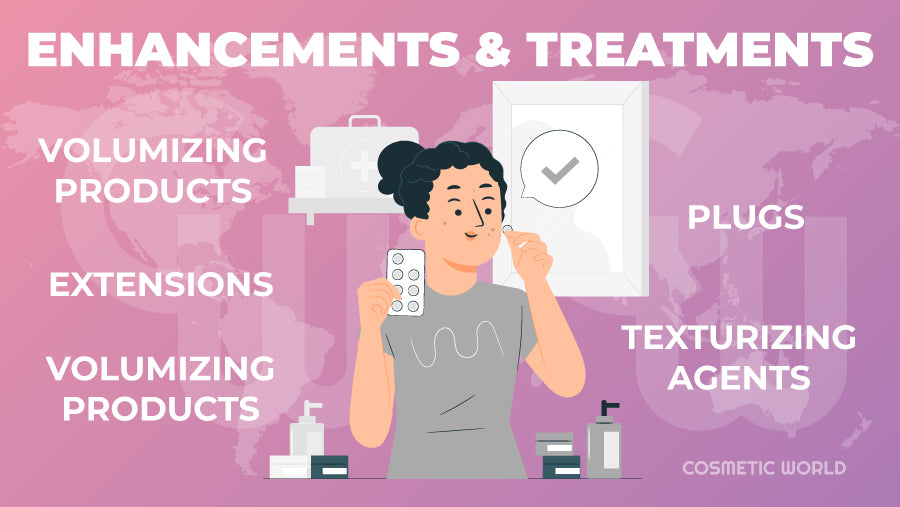
Let’s jazz things up a bit, shall we? From twirling Cinderella-esque extensions to trusty potions that add magic (read: volume) to your mane, here's the tea on going the extra mile for that lavish look.
Extensions, Plugs, and Implants
Pros and cons of hair extensions
Ready to channel your inner Rapunzel? Hair extensions are strands of real or synthetic hair that you can attach to your natural tresses. The perfect remedy for those who want instant gratification in the volume department! They blend seamlessly, transform thin hair, and make your locks sing with fullness and length.
Hair Extensions - The Good and the Not-so-Good
Pros |
Cons |
| Immediate increase in length and volume | Can be expensive |
| Variety of options (clip-in, tape-in, etc.) | May cause tension on natural hair if not worn correctly |
| Easily styled and colored | Maintenance is necessary for longevity |
| Temporary (for those commitment-phobes!) | Mismatched extensions can look unnatural |
An overview of hair plugs and implants
Beyond extensions, if you're looking for a more long-term commitment, consider hair plugs and implants. Hair plugs are tiny pieces of scalp, replete with hair, transplanted to areas where the hair is thinning. It's a bit of musical chairs with your hair. Then there are hair implants – a more modern approach where individual hair follicles are transplanted. Both aim to reduce the appearance of thinning hair by repopulating the barren scalp territories.
Products to Add Volume and Texture
Volumizing products:
Remember the magic potions we talked about? Volumizing products are like fairy godmothers for your hair. They not only boost the volume but also maintain the hair's natural texture.
-
Mousse: A lightweight frothy wonder, perfect for giving life to limp tresses. Apply to damp hair and let it work its magic.
-
Volume Spray: Think of it as an energy drink for your hair. A few spritzes and voila, instant volume!
-
Hair Pastes: These are perfect for creating texture and lift, especially for shorter styles.
Texturizing agents:
Texturizing agents are the unsung heroes that transform thin hair into thick luscious locks.
-
Dry Texturizing Spray: This is your best friend for adding oomph and grip without the grease. Perfect for achieving those tousled, beachy waves or giving flat hair the lift it yearns for.
-
Dry Shampoo: Not only does this magical spray suck up oil, but it also provides volume by preventing hair strands from sticking together. However, don't confuse it with texturizing spray. While both can make thin hair look voluminous, dry shampoo primarily focuses on oil absorption.
Texture and volume are like the salt and pepper of hair; they make everything better! But remember, while all these tools and products can enhance and make your hair look thicker, embracing and loving your natural self is the real beauty dream! 🌟💕👩🦰
Lifestyle and Other Factors
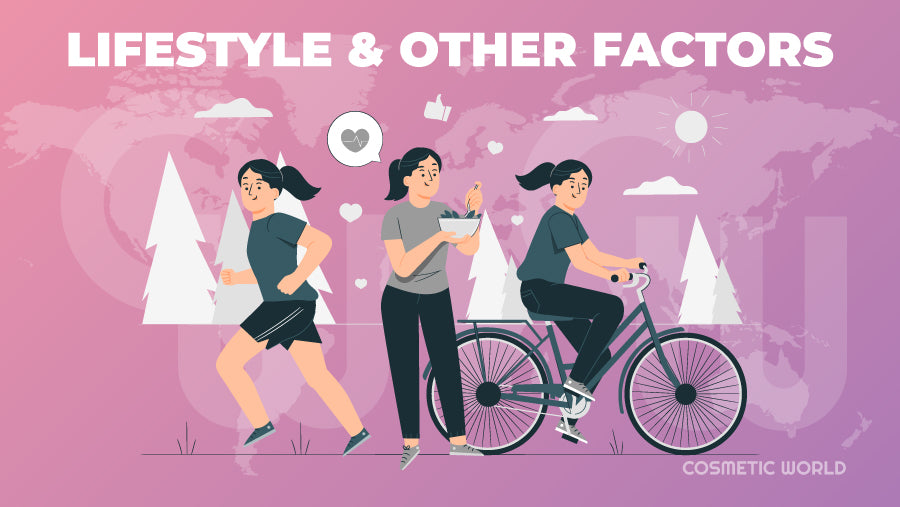
Sweeties, if hair care was a cake (and who doesn’t love cake?), then products would be the frosting. But guess what the main ingredient is? Yep, it’s the lifestyle choices you make. 🍰
The correlation between a healthy scalp and thicker-looking hair
Like a garden, the health of your blooms (in this case, your locks) largely depends on the condition of the soil. A healthy scalp is the nurturing ground that hair follicles crave. When your scalp is in top-notch condition, it can support hair growth and reduce breakage, thus leading to thicker, healthier-looking hair. It's all about the foundation, honey!
Scalp massages
Ah, the magic touch! A scalp massage is like a mini-vacation for your head. It promotes blood circulation, nourishing hair follicles with all the juicy nutrients they need to thrive. Not only do these massages promote hair growth, but they also help in distributing the scalp’s natural oils, making thin hair woes a thing of the past.
Ready for some DIY pampering?
-
Use your fingertips and start at the front of your scalp.
-
Press down gently and move in small circles.
-
Work your way across the scalp to the back, and then down the sides.
-
For an extra treat, add a few drops of essential oil or use a hair oil of your choice!
Here is a short video on how to do it:
The impact of stress and weight on hair health
Here's some science sprinkled with fairy dust for y'all: Chronic stress can disrupt the hair's growth cycle. According to research, stress releases certain hormones that can lead to hair loss and can make thinning hair feel even flatter. Now, regarding weight – sudden weight loss or being underweight can result in hair thinning. It's all interconnected – when the body doesn't receive the essential nutrients it needs, it can divert its resources away from non-vital functions, like hair growth.
Dietary habits to adopt and avoid
Feed your hair, darling! Just as what you eat affects your skin, your dietary choices hugely impact your hair's health.
🍎 Habits to Adopt:
-
Protein-rich foods: Hair is primarily made of protein, so foods like fish, eggs, and beans can be your hair's BFFs.
-
Omega-3 fatty acids: Think fish, walnuts, and flaxseeds.
-
Iron: Green veggies, nuts, and whole grains are your go-to.
-
Vitamin E: Almonds, sunflower seeds, and spinach, oh my!
🚫 Habits to Avoid:
-
Too much vitamin A: Good in small doses, but overdose can cause hair loss.
-
Junk food: While it might be yummy, processed foods can cause an imbalance in your system.
-
Crash diets: Rapid weight loss can stress your hair out.
-
Excessive caffeine: Sorry coffee lovers, too much caffeine can dehydrate your scalp!
Remember, while hair is an accessory we wear every day, it's also a reflection of our internal health. Look after yourself from the inside out, and you'll be flipping those luscious locks in no time! 💁♀️✨🥗
Frequently Asked Questions
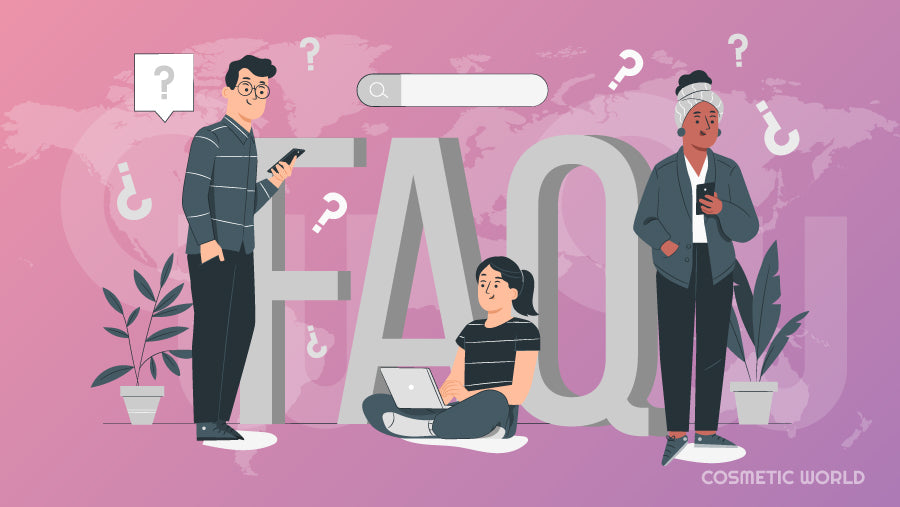
Hello, curious kittens! 🐱 Got questions? Of course, you do! That's why we've compiled some of the most frequently asked hair queries for you. Let's dive into the hairy details:
Can thinning hair become thick again?
Short Answer: Yes, depending on the cause.
Detailed: If the thinning is due to temporary factors like stress or dietary issues, addressing the root cause can help. However, genetic thinning might be more challenging to reverse.
How to hide a thinning scalp?
Short Answer: Hairstyling tricks and products.
Detailed: Using volumizing products, strategic teasing, and the right haircut can help camouflage a thinning scalp. Root touch-up sprays also work wonders!
Which vitamins thicken hair?
Short Answer: B12, biotin, and vitamin E.
Detailed: These vitamins support hair health and can promote thickness when consumed in the right amounts.
What illnesses cause hair loss in females?
Short Answer: PCOS, thyroid disorders, and autoimmune diseases.
Detailed: Conditions like polycystic ovary syndrome, thyroid imbalances, and certain autoimmune diseases can lead to hair thinning in females.
What are the best hairstyles for thinning hair?
Short Answer: Pixie cuts, angled bobs, and layered styles.
Detailed: Hairstyles that add volume and movement, like the pixie or layered looks, can give an illusion of fuller hair.
Is light or dark hair better for thinning hair?
Short Answer: Lighter shades.
Detailed: Lighter hair colors can help camouflage the scalp and thinning areas better than dark shades.
What is the average age to start experiencing thinning hair?
Short Answer: Mid-30s to 40s.
Detailed: While it varies, many individuals start noticing hair thinning in their mid-30s to 40s. However, it can start earlier due to various factors.
Why is my hair so thin I can see my scalp?
Short Answer: Genetics, lifestyle, or health issues.
Detailed: While genetics play a role, lifestyle choices or underlying health conditions can also cause pronounced thinning.
How can I thicken my thin hair naturally?
Short Answer: Scalp massages, a balanced diet, and natural oils.
Detailed: Promote circulation with scalp massages, eat nutrient-rich foods, and use oils like castor for natural thickness.
How do I stop my hair from thinning as I age?
Short Answer: Healthy lifestyle and proper hair care.
Detailed: Eat well, reduce stress, and adopt a hair care routine suitable for your hair type.
Which vitamin deficiency causes hair loss?
Short Answer: Iron, vitamin D, and biotin.
Detailed: Deficiencies in these vitamins can lead to hair loss, so it's essential to maintain balanced levels.
How can I hide my scalp with thin hair?
Short Answer: Color techniques and volumizing products.
Detailed: Strategic hair coloring, like highlights, and using volume-boosting products can help mask visible scalp.
Is it bad if I can see my scalp?
Short Answer: Not necessarily.
Detailed: While visible scalp can be natural for some, if it's a sudden change, it might indicate an underlying issue.
Is there anything that actually thickens hair?
Short Answer: Yes, certain products and treatments.
Detailed: Volumizing products, certain shampoos, and some medical treatments can help in making thin hair look thicker.
What foods are good for hair thickness?
Short Answer: Eggs, berries, and spinach.
Detailed: Foods rich in protein, vitamins, and antioxidants promote hair health and thickness.
What foods stop hair loss?
Short Answer: Fatty fish, walnuts, and avocados.
Detailed: Foods packed with omega-3 fatty acids, biotin, and vitamin E can help combat hair loss.
Conclusion
As we wrap up our comprehensive guide on mastering the art of how to make thinning hair look thicker, let's revisit the golden nuggets we've shared:
-
Understanding is Key: Realizing the difference between thin and fine hair, and recognizing the causes behind hair thinning is paramount.
-
Product Power: The right shampoo, be it volumizing or clarifying, can work wonders in giving your hair that much-desired lift.
-
Natural Boosters: Vitamins and diet play a pivotal role. Nourishing from within often reflects outside.
-
Haircuts & Styling: A good haircut is not just a beauty enhancer; it's a game-changer. Combined with the right styling techniques and tools, you can create illusions of volume and density.
-
Enhancements and Treatments: From extensions to volumizing products, there are myriad ways to boost your hair's volume and texture.
-
Holistic Approach: Your lifestyle, stress levels, and dietary habits directly impact your hair's health. A healthy scalp often means healthier-looking hair.
-
Be Question Ready: Knowledge is power. The more you know about your hair, its needs, and potential challenges, the better equipped you'll be to tackle them.
Remember, while we've shared numerous tips and tricks, it's essential to recognize that everyone's hair is unique. Embrace its individuality. It's all about experimenting, understanding what works for you, and adopting those strategies with confidence. The journey to transforming thin hair into a voluminous beauty dream is filled with trials, but the end result? Absolutely worth it!


